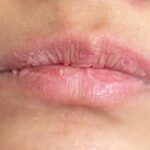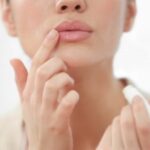However, there is an extremely delicate part that many parents overlook – their child’s lips.
If you observe carefully, you may notice that your child’s lips can sometimes be dry, chapped, or even bleeding. In fact, long before these symptoms appear, the lips have been quietly suffering from the dry air.
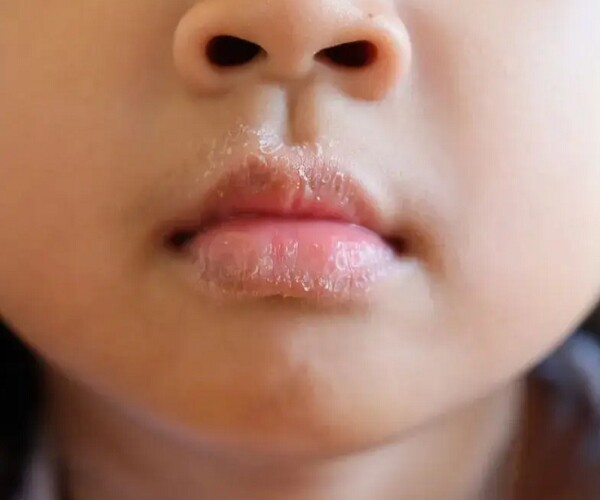
Children’s lips are prone to dryness and chapping during cold seasons.

Children’s lips are delicate, and autumn and winter are the most vulnerable seasons.
The lips are one of the most delicate parts of the human face. Compared to other facial skin, lips have two significant “weaknesses.”
Weakness 1: Lack of sebaceous glands, resulting in insufficient oil secretion for self-protection.
Weakness 2: The epidermis lacks a stratum corneum, evident from the thinness of the lips compared to other facial areas.
Consequently, the lips’ natural protective barrier is compromised, making them highly sensitive to external stimuli.
For instance, changes in air humidity, increased UV rays, and even dietary habits or toothpaste can cause subtle harm.
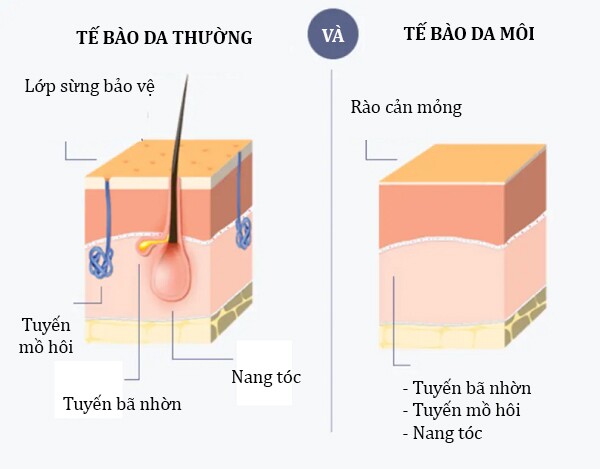
The lip area lacks sebaceous glands, resulting in insufficient oil secretion for self-protection.
Dry environments can strip moisture from the lips.
Changes in air humidity can easily affect the moisture level of the stratum corneum, significantly reducing the skin’s water-holding capacity. This leads to issues such as dryness and flaking after dehydration.
Children’s delicate lips are more prone to dehydration and loss of protective functions.
Small actions like licking the lips can exacerbate the problem.
When the lips are dehydrated, many children will unconsciously lick them to alleviate the discomfort, but this often backfires.
Licking the lips not only causes saliva to evaporate but also removes more moisture, making the lips drier. Enzymes in saliva can also irritate the lips, worsening dryness and potentially leading to lick eczema.
Lick eczema is characterized by dry, flaky, and darkly discolored skin around the areas the tongue can reach.
When a child’s mouth is dry or chapped, it becomes more challenging to care for them. They will experience mouth pain, and their cooperation will diminish significantly.
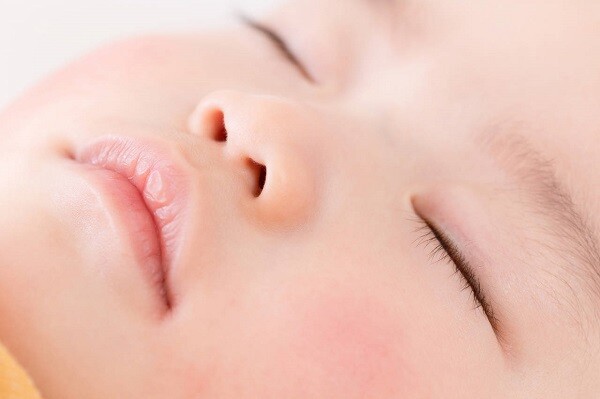
Certain daily habits can make children’s lips more prone to dryness and flaking.

Help your child develop small daily habits to better care for their lips.
Choose suitable lip balm.
Some practical experiments on adults have shown that lipsticks containing high concentrations of occlusives can significantly reduce transdermal water loss, increase moisture levels, and reduce lip wrinkles and roughness.
Researchers conducted controlled experiments before and after using the lipstick. After four weeks of usage, lip dryness improved significantly.
For children, applying lip balm two to three times a day (for example, before bedtime, after waking up, and after washing the face) can serve as a preventive measure.
If your child already has dry skin issues, you can increase the frequency and thickness of application as needed.
If your child’s lips exhibit other severe problems, consult a specialist.
There are three lip conditions that require vigilance and medical attention:
Exfoliative Cheilitis: Repeated lip peeling, widespread dry peeling, potentially leading to cracking and bleeding in severe cases.
Angular Cheilitis: Dryness, pain, or even infection at the corners of the mouth, often caused by licking or infection.
Allergic Cheilitis: More common in children with allergic dermatitis, the lips exhibit dryness, flaking, and itching.
Additionally, daily use of lip balm chosen by parents can be an effective prevention and mitigation method if used correctly.

Mothers should pay attention to their child’s lip care during winter.
Do not use adult lipsticks on children indiscriminately.
Choose safe and gentle lip balms for children. Most lip balms use moisturizers for hydration and occlusives to seal in moisture, a simple and effective strategy to prevent lip problems.
After application, it creates a protective film on the lips, preventing moisture loss and slowing down dryness and flaking.
Occlusives: Substances like petrolatum, oils, lanolin, and beeswax can form a protective barrier on the lip surface, preventing water evaporation and reducing transdermal water loss.
Moisturizers: Ingredients such as vegetable oils, vitamin E, glycerin, and panthenol can draw moisture from the deeper layers of the skin, keeping the lips hydrated and reducing dryness.
Occlusives and moisturizers work best together, significantly reducing transdermal water loss, increasing moisture levels, and smoothing the lips.
Parents should be more cautious when choosing lip products for their children. Carefully read the ingredient list and opt for formulas that are gentle, non-irritating, and relatively simple. This way, even if the child accidentally ingests the product, it won’t cause significant concern.
“3 ‘Shocking’ Differences Between Daily Lipstick Wearers and Those Who Go Bare-Lipped”
Introducing the secret weapon to enhancing your natural beauty – our lipsticks are like wardrobe essentials for every woman. But beware, not all lipsticks are created equal. Some are laden with chemicals that can wreak havoc on your delicate lips over time. Uncover the perfect balance of color and care with our range of lipsticks that promise a pop of color without compromising the health of your lips.

























